Healthcare in Senegal
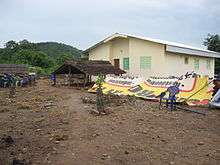
Healthcare in Senegal is a center topic of discourse in understanding the wellbeing and vitality of the Senegalese people. According to 2001 data, 54% of the population is below the poverty line, which has implications on people's wellbeing.[1] Common medical problems in Senegal include child mortality, maternal death, malaria, and sexual diseases including HIV/AIDS.[2] There is a high disparity in both the quality and extent of health services between urban and rural areas.[2] The greatest problems in public health are in the East and South (Louga, Kaolack, and Tambacounda) and the region of Casamance.
Currently, there is a need to improve Senegal’s infrastructure to promote a healthy, decent living environment for the Senegalese.[3] Additionally, the country needs more doctors and health personnel, particularly general practitioners, gynecologists, obstetricians, pediatricians, and cardiologists. Moreover, there is a strong need to have more of these personnel in rural areas: as of 2008, Senegal has only twenty full-fledged hospitals, seven of which are in Dakar.[4] From approximately 1905 to the present, there have been significant shifts in Senegal’s healthcare system, the system’s structures, specific diseases that are problematic in Senegal, as well as issues affecting women and children and access to healthcare in Senegal.
History
As is the case in the rest of the African continent, the Senegalese have long used traditional medicines and rely on traditional healers for their ailments. During the colonial era, the health care system was drastically changed. In 1905, France laid the foundation for health policy in the area, though primarily to serve the French colonial officials and not the native Senegalese. Imperialist extraction from African colonies meant that the health care infrastructure was primarily constructed in large, coastal cities such as Dakar.[5] Infrastructure in rural areas was largely left out of the picture. Later in 1905, Medical Assistance for the Indigenous was created. It was responsible for providing free medical care and health advice to indigenous peoples, promoting immunization, and promoting maternal and child health. After the Second World War, international public opinion became more critical of colonial policy, and comprehensive programs were put in place to fight against major diseases. Since its independence from France, Senegal has become more involved in major international programs for development and health. Some historians argue that the commoditization and commercialization of healthcare, moving from the colonial to the post-colonial era, has reduced health care to a convenience that is only available to the wealthy, with those in dire poverty often unable to access care.[5] As a result of the development of health care infrastructure in the colonial era by the French, access remains very uneven across regions and between income levels.
Organization of the health care system
Senegal’s health system is pyramidal, with three main parts: a central level, a regional level, and a peripheral level. The central level contains the minister’s office, branches, and related services. The regional level is known as the "medical region", an administrative region that addresses healthcare services within a given region. The peripheral level is known as the "health district", with each district having at least one health center and a network of smaller centers.
The national health system is divided into three levels: regional hospitals, district health centers, and health posts.[2] Rural health care is divided into three parts: health centers, health posts, and health points. Health centers are at the top, with one to two medical doctors and 15-20 people as part of the health staff. Health posts are below these, with four or five health workers. At the lowest level are health points, which house one or two health agents and a midwife.[2] The system has been the subject of much criticism, especially because of the increasing demands of profitability and the corruption in this part of the government as in other domains of public life.
Financing care
In 1999, 53% of health funding came from the government, 11% from individuals, 6% from communities, and 30% from international partners. Of a household's health expenditures, 89% is out-of-pocket spending while 11% is in the form of health insurance contributions.[6] Additionally, only 15.2% of Senegalese people have health insurance, most of whom work in the formal sector.[6] On average, a facility charges 2.90 USD for inpatient care for the median length of stay (five days), 0.43 USD for adult outpatient care, and 0.24 USD for children's outpatient care. In terms of expanding health insurance, it seems that policies that will reduce the negative effect of the time lost to seek care by workers, or policies that will increase the accessibility and the quality of care, will be more effective to increase health care utilization than would the introduction of health insurance to those who do not yet have it.[6]
Changes to health care strategies
Bamako Initiative
One of the most influential pieces to the transformation of Senegal’s healthcare system in the late 1990s was the Bamako Initiative. The Bamako Initiative started in 1987, when health ministers from two dozen African countries met with representatives of WHO and UNICEF to discuss the limited success of health care strategies in Africa and the need for intervention.[7] At the conference, leaders agreed to provide a minimum of health care services with severely reduced social services budgets. As a result of the meeting, major changes to Senegal’s health system occurred. The meeting resulted in the decentralization of Senegal’s health sector, which some critics believe has brought about chaos in local governments and administration in Senegal.
The Bamako Initiative also led to the establishment of health committees in Senegal in 1992. The committees strive to meet three central goals: to promote health of their community, to mobilize the community around health development, and to improve the quality of services rendered at their health post, clinic, or hospital.[7] In practice, the committees have not been completely representative, and have become problematic to clinic staff and medical personnel. Women have been almost entirely absent from committee elections and seldom are selected for committee boards. Rather, these boards are held by males who may ignore the needs of women, children, and the disadvantaged in their committees. Critics believe the committees have been characterized by mismanagement, mistrust, and a lack of transparency. Despite these issues, there have been significant gains from the Bamako Initiative and health committees. The changes have led to the improved availability of pharmaceuticals, and have also made up for the shortage of health personnel in many instances.[7]
Decentralization
Decentralization began in the late 1990s, following the Bamako initiative. The key goal has been to make the state more responsive and adaptable to local and regional needs, as opposed to when administrative power and responsibility were concentrated more centrally.[7] This has resulted in more accountability and real power on part of local officials. The state funds a significant portion of the local health budget, but health targets, goals, and interventions are determined at the local level. However, because most local officials have no training on how decentralization should work; there has been a vacuum in terms of planning and management, and weak institutional capacity and the few resources to allocate among increasing responsibilities have exacerbated issues.[7] Decentralization has failed in two major ways: the first three years failed to render politics and local government more participatory and more responsive to local communities, and there has been no attention to gender equality and participation. Decentralization has meant that authorities have completely failed to engage with women’s situations and concerns. There have been additional issues in creating conflicts between city officials and medical district officers over disbursement of money for the health sector.[8]
Privatization
In addition to changes with the Bamako Initiative and decentralization, Senegalese healthcare has become privatized. Privatization in Senegal has meant that user fees and the sales of pharmaceuticals finance a significant part of the health sector.[7] The state still funds the health sector by paying salaries of state employees and giving each district a discretionary budget each year that it decides. However, user fees and pharmaceutical sales are only the most evident parts of the privatized health system in Senegal. Now, patients must buy a ticket to stand in line and receive care at a health clinic, which can be particularly problematic for mothers, the elderly, and the poorest of the poor.[7] Moreover, hospitals require even more available cash. The effects of privatization in have especially disadvantaged women, because they typically manage the health of the household. Additionally, many preventable deaths have occurred as a direct result of privatization.
Health care utilization
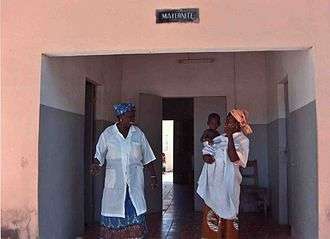
Health care utilization in Senegal has been shaped by a variety of factors. Women have a greater likelihood of using care than men by 1.4 percentage points.[6] At the individual level, the likelihood of seeking treatment is influenced by the relationship to the head of the household, employment status, gender, and age. It has been found that wealthier people are also more likely to use care by 8 percentage points than the poorest. Moreover, workers who belong to households that require a high load of farm work are less likely to seek care by 7.5 percentage points than the non-workers of households with a low agricultural work requirement.[6]
Barriers to healthcare and medicine
Some of the greatest barriers to health care utilization include lack of information, lack of communication, low number of health care workers, and social and religious barriers. Currently, there is a strong need for strategies to empower and better support the knowledge role of health coordinators and supervisors.[9] Additionally, the lack of access to current, relevant information by health professionals and decision-makers in Senegal has been problematic. Moreover, health workers desire information on ways to motivate men’s involvement in reproductive health and to address rumors and religious barriers to family planning, which have hindered women’s health care utilization.[9]
Some Senegalese people, particularly in rural areas, face inadequate access to medicines and prescriptions. Improving access to medicine is a priority in developing nations like Senegal.[10] In 2001, Senegal had only 520 pharmacies (1 per 18,320 people) and 731 health centers (1 per 13,032 people). Access to medicine in Senegal may be limited in three main areas: inadequate supply of drugs, including critical drugs missing in health centers and pharmacies; insufficient health infrastructures to cover needs of the entire population; and high costs of drugs, which are sometimes higher than the minimum price, which can be problematic for the poorest of the poor.[10]
Disparities between rural and urban areas
Major disparities exist in health care access for those living in urban versus rural areas. Approximately 70% of doctors and 80% of pharmacists and dentists are located in Dakar, the capital city. However, only 42% of the Senegalese population lives in urban areas, such as Dakar, which means that few doctors are available to rural residents.[1] Of every 10,000 women who give birth, 24 will die in urban areas, but nearly 100 will die in rural areas.[2] Additionally, there are major disparities in children's nutrition in urban versus rural areas, with those in rural areas being more heavily disadvantaged.[3] Therefore, great attention may be placed on narrowing the gap between urban and rural healthcare access.
Transportation to health facilities

Often, distance from health care facilities, rough roads, and improper means of transportation limit healthcare access in Senegal. For 80.5% of households, the poorly equipped health post is the only accessible health facility in an average distance of 4.3 kilometers.[2] The closest high-level provider (i.e. a hospital) is located, on average, 20& km away from the village of the household. The improvement in the accessibility of health facilities through better road quality and better means of transport will have a positive effect on health care utilization.[6] Because of extreme distances and environmental conditions, such as muddy roads, only 32% of rural households have regular access to a health center and thereby access to a medical doctor.[2] There are two times more unpaved roads in Senegal than there are paved roads.[1] Often, there is trouble with transportation and vehicles in that non-governmental organizations, or NGOs, may not have a large enough fleet, or vehicles are inappropriate for terrain and dirt roads.[2] Some health centers have ambulances, but there is no plan for vehicle maintenance and replacement. Additionally, there are issues with the transportation of sick, pregnant women; if ambulances are not available, horse-drawn trailers may also be effective. The most effective avenue is to improve the mobility of health care providers rather than solely focusing on improving the mobility of rural populations, which requires far less structural support and funding than does providing transportation for every household.[2]
Specific diseases
.jpg)
A number of diseases continue to afflict persons who live in and travel to Senegal, some of which are related to Senegal's tropical climate. One of the most prominent diseases is malaria, a parasitic disease transmitted by mosquito bites. One of Senegal's strategies for combating malaria has been the National Program for the Fight Against Malaria. Other diseases affecting Senegal include:
- Syphilis, which is directly related to the social environment, poor health, and housing conditions
- Tuberculosis, which is mostly localized in Dakar and Thies, and affects more men than women, with approximately 9500 cases of tuberculosis per year in Senegal and a 2-4% mortality rate
- Schistosomiasis, a parasitic disease common in the tropics
- Trypanosomiasis, or sleeping sickness, a parasitic diease that has long affected the valleys in Eastern Senegal, known as Ferlo
- Meningitis, with outbreaks between February and March, especially in Eastern Senegal and occasionally in Dakar.
- Cholera, with outbreaks continuing to be problematic. In 2007 alone, there were over 2000 reported cases of cholera in Senegal.[4]
HIV/AIDS
The rate of HIV/AIDS in Senegal is one of the lowest in Africa, at approximately 0.9%. According to the UNAIDS, the proportion of adults between the ages of 15 and 49 with HIV/AIDS is approximately 0.9%. The Casamance region has the highest prevalence of HIV/AIDS at 2.0%, which can be attributed in part to the Casamance conflict. There are about 59,000 people in Senegal living with HIV/AIDS, according to a 2009 estimate.[1]
Women's healthcare concerns
A number of healthcare concerns afflict women in particular, among them female genital mutilation, maternal healthcare, and gendered healthcare discrepancies. Further, the restructuring of the health care system has also affected women significantly.
Female genital mutilation
About 20 percent of Senegalese women undergo female genital mutilation (FGM) of some kind, with the most prevalent procedure being the removal of the tip of the clitoris, according to the National Program Against Female Genital Mutilation.[11] It is not widespread among the Wolof or Serer, but is more common among the Fulani, the Diola, the Toucouleurs and the Mandingo. Notably, FGM has no Islamic basis.[11]
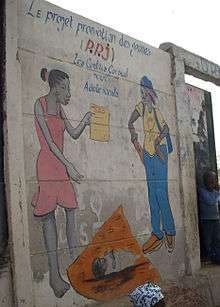
Births and fertility
The birth rate in Senegal is about 36.19 births per 1000 people, according to an 2012 estimate.[1] The fertility rate, according to 2007 estimates, is relatively high, with an average of 5 children per woman. Moreover, the infant mortality rate is 55.16 deaths per 1,000 live births,[1] and the infant mortality rate of males is slightly higher than that of females.
Abortion
There are many cultural and social barriers that limit abortion in Senegal. Studies have shown that there is strong opposition, from both men and women, to women’s individual choice and agency with abortions, family planning, and sexual health.[11] Therapeutic abortion is allowed to protect a woman’s health or life if threatened by pregnancy, but abortion of any other kind is banned.[11]
Maternal mortality
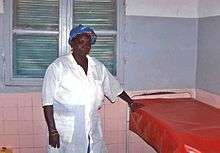
Maternal mortality rates in Senegal remain high relative to those of more developed countries. In 2008, the World Health Organization estimated a maternal mortality rate of 450 deaths per 100,000 live births in Senegal.[12] Maternal deaths are typically clustered around labor, delivery, and the immediate postpartum period. One of the most prevalent issues is the regional imbalance in the distribution of health personnel and health indicators, with a disproportionate burden of disease in Eastern Senegal. Expanding coverage of healthcare workers present at birth, in particular midwifery care, can lessen delays, thus minimizing the risk of severe complications and even death. Increased numbers of health workers in a given region is associated with improved outcomes in maternal mortality. Additionally, extreme conservative practices and fundamentalism can limit dispersal of health personnel, especially that of midwives and other female health workers.[12]
Women and structural changes
In Senegal, gender relations have been largely ignored in processes of decentralization and implementation of community management strategies.[7] One of the key problems resulting in changes to the health sector is that elected officials and health sector personnel have failed to engage with women as potential leaders and participants in community health structures, instead viewing them in some cases as family health managers and targets of health education messages. As household health managers and primary consumers of public health care, women are intimately connected with realities of managing illness and seeking medical treatment. However, in spite of their marginalization, women are not completely passive in the face of disease. As an example, some women have created networks of service providers in the informal sector for the majority of health care needs in the region of Pikine.[7]
Women’s health services and activism
Social opposition to women’s rights and agency have, as some have argued, barred women from receiving necessary choice and capabilities in regard to family planning, abortions, and sexual health.[11] Health services targeted at women primarily concern childbearing. As a result, diseases like cancer or infertility, or those linked to menopause or violence, may be ignored. In Senegal, a large number of health care providers believe unmarried women should not be given information on family planning methods. Moreover, the Senegalese government has in some cases failed to enforce international human rights treaties it has already signed, some of which protect women’s health services and rights. Also, women’s groups in Senegal have not made sexual health a priority, as some believe they should.[11]
Approaching healthcare inadequacies
Community-based health insurance plans (CBHI)
One of the major proposed solutions to solving issues within the realm of maternal health care is the inclusion of membership in community-based health insurance plans (CBHI). CHBI schemes are voluntary, non-profit health insurance schemes organized and managed at the community level.[13] In developing nations, CBHI plans are seen as a mechanism to meet health-financing needs of rural informal sector households. CHBI has been incorporated into the national health financing strategy in Senegal. CBHI increases facility-based maternal health services by reducing direct payments, thus facilitating timely use of healthcare. It is beneficial in guarding households against unpredictable and potentially catastrophic medical fees associated with pregnancy-related complications. It can also increase women’s interaction with the formal health care sector through its coverage of non-maternal health services. The most important element is the inclusion of maternal health care in any CBHI benefits package, which makes the most significant difference. CBHI plans can increase the demand for and quality of maternal care though requiring certain standards in contracts with health facilities.[13] However, membership in a CBHI scheme is not always sufficient in influencing maternal health behaviors.
Community health workers (CHWs)
In some countries, community health workers, or CHWs, act as a bridge between the health care delivery system and the community, and ensure that people receive adequate primary health care.[14] CHWs are part of a larger goal to find appropriate strategies to improve the attraction and retention of health workers in remote and rural areas, which is particularly important in Senegal. CHWs may also empower the community to identify its needs. In Senegalese villages, CHWs are often unable to leave their home community for training and education, which has been a major obstacle for developing effective CHW schemes. Other obstacles include poor transportation, poverty, the need to run families, and the absence of an economic plan for CHW training. In particular, village populations in Senegal do not necessarily recognize in the CHW the skills necessary for outreach activities.[14]
Children’s healthcare
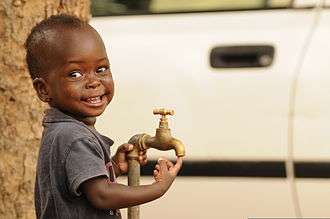
Children’s healthcare in Senegal is of primary concern to development strategists, and is heavily influenced by the health, education, and wellbeing of women. According to data from 2005, 14.5% percent of Senegalese children under the age of 5 are underweight.[1] Only 42% of children between 12 and 23 months receive all necessary vaccinations. Children whose mothers have a primary education have a lower prevalence of malnutrition, and children whose mothers have advanced education are most likely to have the lowest incidence of malnutrition.[3]
Rates of malnutrition are most pronounced among infants between one and two years old. Barriers to of children’s health include:
- maternal misunderstanding of the nutritional needs of the child
- a lack of nutritional follow-up of the children
- the non-practice of the exclusive breast feeding at least for the first four months of life of the infant
- a misunderstanding of good weaning practices
- the precariousness of the health condition of the children (frequency of the febrile episodes associated with diarrhea and respiratory infections)
- poor living standards
- difficulty accessing access to certain basic elements
The nutritional health conditions of children less than five years old may relate to the age as well as the child’s cycle of life, the size and place of residence, elements linked to the household environment such as the nature of the soil of the housing, the source of supply in drinking water, the evacuation mode of the domestic garbage, and the mother's level of education.[3]
Mental health
The majority of Senegal’s healthcare budget goes to physical health needs; mental health remains an area of concern. The Senegalese government spends 9% of its total health budget on mental health.[15] Senegal has no national mental health program, but mental health issues are prevalent. In 2005, nearly 17% of children had emotional, behavioral or neuropsychiatric disorders. Additionally, 16% of adults had psychiatric illness. Primary sources of mental health financing include, in descending order, private insurance, social insurance, out of pocket expenditures by patient or family, and taxes. Mental health is part of primary health care system, with the treatment of severe mental disorders available at the primary level. NGOs are involved with advocacy, prevention, treatment, and rehabilitation.[15] Still, more attention and concern remains to be paid to mental health in Senegal.
References
- 1 2 3 4 5 6 7 Central Intelligence Agency, "World Fact Book: Senegal." Last modified Feb 05 2013. Accessed March 19, 2013. https://www.cia.gov/library/publications/the-world-factbook/geos/sg.html.
- 1 2 3 4 5 6 7 8 9 Heyen-Perschon, Jürgen. "Report on current situation in the health sector of Senegal and possible roles for non-motorised transport interventions." Institution for Transportation and Development Policy. (2005). Accessed March 19, 2013.
- 1 2 3 4 Badji, Marie Suzanne, and Dorothee Boccanfuso. "Nutritional Health of the Children in Senegal: A Comparative Analysis." Journal Of African Development 3, no. 1 (Spring 2008): 71-103. EconLit with Full Text, EBSCOhost (accessed February 21, 2013).
- 1 2 The Report: Senegal 2008. Oxford Business Group, 2008. https://books.google.com/books?id=DG2mhyhrtKkC. Accessed April 18, 2013.
- 1 2 Keita, Maghan. A political economy of health care in Senegal. n.p.: Leiden [u.a.] : Brill, 2007, 2007. Bibliotheksverbund Bayern, EBSCOhost. Accessed April 18, 2013.
- 1 2 3 4 5 6 Lepine, A, and A Le Nestour. "The Determinants of Health Care Utilisation in Rural Senegal." Journal Of African Economies 22, no. 1 (n.d.): 163-186. Social Sciences Citation Index, EBSCOhost. Accessed February 8, 2013.
- 1 2 3 4 5 6 7 8 9 Foley, Ellen E. "No money, no care: women and health sector reform in Senegal." Urban Anthropology And Studies Of Cultural Systems And World Economic Development 30, no. i (2001): 1-50. Index Islamicus, EBSCOhost. Accessed February 21, 2013.
- ↑ Foley, Ellen E. "The anti-politics of health reform: household power relations and child health in rural Senegal." Anthropology & Medicine 16, no. 1 (April 2009): 61-71. Academic Search Complete, EBSCOhost. Accessed February 8, 2013.
- 1 2 Sylla, A.H. ( 1 ), E.T. ( 2 ) Robinson, L. ( 3 ) Raney, and K. ( 4 ) Seck. 2012. "Qualitative study of health information needs, flow, and use in senegal." Journal Of Health Communication 17, no. SUPPL. 2: 46-63. Scopus®, EBSCOhost. Accessed April 1, 2013.
- 1 2 Garenne, M. ( 1,6 ), D. ( 2 ) Candau, L.C. ( 2 ) Teulières, J.-M. ( 3 ) Guimier, M. ( 4 ) Badiane, and A.C. ( 5 ) Diop. 2006. "Access to medicines in Senegal: Results of a sample survey." Tropical Doctor 36, no. 1: 5-8. Scopus®, EBSCOhost (accessed April 1, 2013).
- 1 2 3 4 5 6 Bop, C. 2006. "Islam and women's sexual health and rights in Senegal." Muslim World Journal Of Human Rights 2, no. 1: Scopus®, EBSCOhost. Accessed April 1, 2013.
- 1 2 Massey, P. 2011. "Reducing maternal mortality in Senegal: using GIS to identify priority regions for the expansion of human resources for health." World Health & Population 13, no. 2: 13-22. Scopus®, EBSCOhost. Accessed April 1, 2013.
- 1 2 Smith, Kimberly V, and Sara Sulzbach. "Community-based health insurance and access to maternal health services: evidence from three West African countries." Social Science & Medicine (1982) 66, no. 12 (June 2008): 2460-2473. MEDLINE, EBSCOhost. Accessed February 21, 2013.
- 1 2 Sarli, L. ( 1 ), E. ( 1 ) Enongene, K. ( 2 ) Bulgarelli, A. ( 3 ) Sarli, A. ( 4 ) Renda, G. ( 4 ) Sansebastiano, and M. ( 5 ) Diouff. 2010. "Training program for community health workers in remote areas in senegal. First experience." Acta Biomedica De L'ateneo Parmense 81, no. 1: 54-62. Scopus®, EBSCOhost. Accessed April 1, 2013.
- 1 2 "Senegal." Mental Health Atlas: 2005 (January 2005): 410-411. Academic Search Complete, EBSCOhost. Accessed February 21, 2013.
